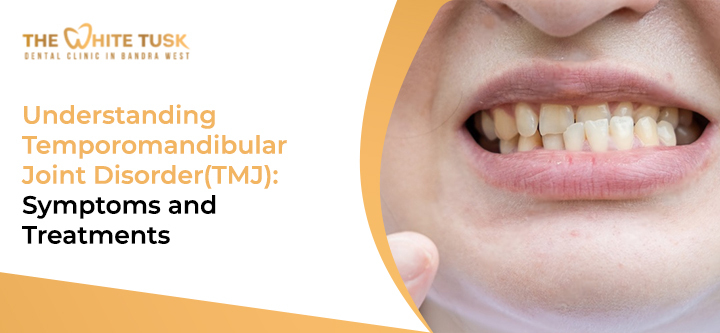
Temporomandibular Joint Disorder (TMJ) is a complex and often misunderstood condition that affects the jaw joint and the muscles that control jaw movement. It can lead to a variety of symptoms, including pain, difficulty in chewing, and limited jaw movement. If you’re experiencing any of these issues, it’s crucial to understand what TMJ is, its symptoms, and the available treatments. In this blog, we’ll delve into the world of TMJ, providing you with the knowledge you need to manage this condition effectively.
Temporomandibular Joint Disorder (TMJ) can be triggered by various factors, and understanding these causes is crucial for effective prevention and management. Let’s delve deeper into the common causes and risk factors associated with TMJ disorders.
Injuries to the jaw, such as those resulting from a blow to the face or whiplash during a car accident, can lead to TMJ disorders. These injuries can damage the jaw joint, the surrounding muscles, or the ligaments, resulting in pain, swelling, and limited jaw movement. It’s important to seek medical attention promptly if you experience a facial injury to prevent long-term TMJ issues.
Arthritis, particularly osteoarthritis and rheumatoid arthritis, can significantly affect the TMJ. Osteoarthritis is the most common form of arthritis, occurring when the cartilage that protects the ends of your bones gradually wears down. This can lead to bone-on-bone rubbing, causing pain, stiffness, and reduced jaw movement. Rheumatoid arthritis, an autoimmune disease, can cause inflammation in the TMJ, leading to similar symptoms.
Bruxism, the habit of teeth grinding or jaw clenching, often related to stress or anxiety, can strain the TMJ and lead to discomfort. This condition can occur during the day but is more common at night, making it difficult to control consciously. Over time, bruxism can wear down tooth enamel, cause jaw pain, and contribute to TMJ disorders.
An improper bite or misaligned jaw can put extra pressure on the TMJ, leading to discomfort and dysfunction. This misalignment can be the result of dental issues, such as crooked teeth or a bad bite, or it can be caused by skeletal problems, such as an uneven jawline. Correcting these alignment issues through orthodontic treatment or surgery can help alleviate TMJ symptoms.
TMJ symptoms can be subtle at first, gradually worsening over time. It’s important to recognize these signs early to seek appropriate treatment:
Diagnosing TMJ can be complex, as symptoms often mimic those of other conditions. A healthcare provider usually takes the following steps:
Treatment for TMJ disorders is tailored to the individual’s specific condition and may include:
In addition to professional treatments, there are several steps you can take at home to manage TMJ symptoms:
If you’re experiencing persistent jaw pain, limited jaw movement, or other TMJ symptoms, it’s important to consult a TMJ specialist. Early treatment can stop the condition from getting worse and enhance your quality of life. Look for specialists such as:
TMJ disorder can significantly impact your daily life, but with the proper understanding and treatment, it’s manageable. By recognizing the symptoms, seeking a proper diagnosis, and exploring the various treatment options, you can find relief from TMJ and enjoy a healthier, more comfortable life. Remember, managing TMJ is a journey, and with the support of healthcare professionals and self-care practices, you can navigate this journey successfully.